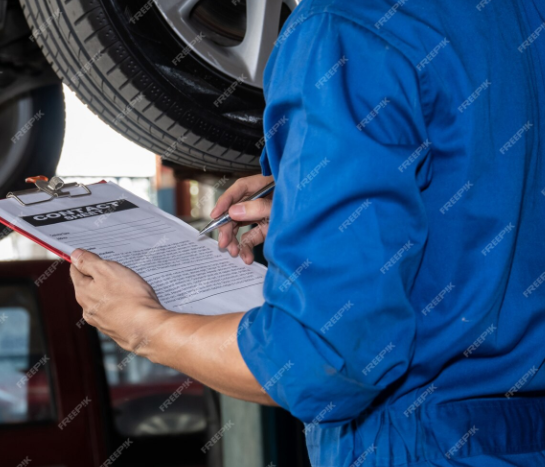The MOT test is one of the most fundamental requirements of vehicle ownership in the UK, yet many drivers have only a basic understanding of what this annual examination involves and why it exists. Named after the Ministry of Transport, which introduced the test in 1960, the MOT has evolved into a comprehensive safety and environmental compliance check that affects millions of UK drivers every year.
Approximately 8.4 million vehicles undergo MOT testing annually in the UK, with around 29% failing their initial test. Understanding what the MOT test involves and why it matters is essential for every UK driver, whether you’re a new driver encountering the system for the first time or an experienced motorist looking to better understand this crucial requirement.
Understanding the MOT Test
What MOT Stands For
MOT stands for Ministry of Transport, the government department that introduced the test in 1960. Although the Ministry of Transport no longer exists, having been reorganised into other departments over the decades, the name has stuck and is now universally recognised across the UK.
The test was originally introduced to address growing concerns about vehicle safety as the number of older vehicles on UK roads increased. Initially required only for vehicles over 10 years old, the testing age has gradually reduced to the current requirement of three years, reflecting improved understanding of vehicle deterioration and safety requirements.
Current Legal Framework
Today’s MOT test operates under comprehensive legislation that establishes clear requirements for vehicle testing, safety standards, and environmental compliance. The Driver and Vehicle Standards Agency (DVSA) now oversees the entire MOT system, ensuring consistent standards across thousands of test centres throughout the UK.
Under current UK law, most vehicles must undergo their first MOT test when they reach three years old, calculated from the date of first registration. This three-year period recognises that new vehicles are generally reliable and safe when properly manufactured, but acknowledges that components begin to deteriorate after several years of use.
Following the initial test, vehicles must undergo annual MOT testing for the remainder of their operational life. The only exception is vehicles over 40 years old, which are considered historic vehicles and are exempt from MOT testing, though they must still be maintained in roadworthy condition.
Legal Penalties
The penalties for driving without a valid MOT certificate are substantial, reflecting the serious safety implications of operating an untested vehicle. Standard fines can reach £1,000, increasing to £2,500 if the vehicle has dangerous defects that should have been identified during testing.
Additionally, driving without an MOT typically invalidates insurance coverage, creating additional legal and financial risks. This makes maintaining current MOT certification essential for legal road use and financial protection.
What the MOT Test Covers
Safety Systems Inspection
The MOT test examines all critical safety systems that directly affect a vehicle’s ability to operate safely on public roads. This comprehensive inspection ensures that vehicles meet minimum safety standards and can protect both occupants and other road users.
- Braking System: The test thoroughly examines brake operation, including brake pedal feel, brake fluid condition, brake pipes and hoses, brake disc and pad condition, and handbrake operation. Modern vehicles with electronic braking systems like ABS also have these systems checked for proper operation.
- Steering System: Steering wheel operation, steering components, power steering systems, and steering alignment are all assessed to ensure drivers can maintain proper vehicle control under all conditions.
- Suspension System: Shock absorbers, springs, suspension mounting points, and related components are examined to ensure vehicle stability, handling, and ride quality meet safety standards.
- Lighting Systems: All external lights are tested, including headlights, tail lights, brake lights, indicators, hazard warning lights, and number plate lights. Proper operation, alignment, and condition are all verified.
- Tyres and Wheels: Tyre condition, tread depth, damage, and correct sizing are checked, along with wheel condition and security. The legal minimum tread depth of 1.6mm across the central three-quarters of the tyre width is strictly enforced.
Environmental Compliance
Environmental testing ensures vehicles meet legal requirements for emissions and contribute to air quality protection. This aspect of testing has become increasingly important as environmental awareness has grown.
- Exhaust Emissions: Petrol vehicles undergo testing for carbon monoxide, hydrocarbons, and other pollutants, while diesel vehicles are tested for smoke opacity and particulate emissions. Vehicles exceeding legal limits fail the test and require repairs to their emissions control systems.
- Exhaust System: The physical exhaust system is inspected for proper mounting, leaks, and correct operation. Damaged exhaust systems can increase emissions and create safety hazards from toxic gas leaks.
- Fuel System: Fuel tanks, lines, and related components are checked for leaks that could create fire hazards or environmental contamination.
Structural Integrity
The test examines the vehicle’s fundamental structure to ensure it can withstand normal operating stresses and provide adequate occupant protection.
- Body Structure: Load-bearing components and safety-critical areas are checked for corrosion, damage, or modifications that could affect structural integrity or safety system operation.
- Seat Belts: Seat belt webbing, buckles, mounting points, and operation are thoroughly examined to ensure these critical safety devices function correctly.
- Doors and Windows: Door operation, window function, and mirror condition are assessed to ensure occupants can enter and exit safely and drivers have adequate visibility.
Why MOT Testing Matters
Road Safety Impact
The MOT test plays a fundamental role in maintaining road safety by identifying and requiring repair of vehicle defects that could lead to accidents. Research shows that vehicles with current MOT certificates are significantly less likely to be involved in accidents caused by mechanical failure.
The preventive nature of MOT testing is particularly valuable for identifying problems before they become dangerous. Many vehicle defects develop gradually, and drivers may not notice deteriorating performance until problems become severe. Annual MOT examination provides independent assessment that identifies developing problems while they can still be safely repaired.
Statistical evidence demonstrates the safety impact of MOT testing. The annual identification and correction of millions of vehicle defects through the MOT system prevents countless potential accidents and saves lives across the UK.
Consumer Protection
The MOT test provides valuable consumer protection by giving vehicle owners independent, professional assessments of their vehicles’ condition. This protection is particularly important in the used car market, where buyers may lack expertise to properly assess vehicle condition.
The standardised nature of MOT testing ensures all vehicles are assessed against the same criteria by qualified professionals using approved procedures. This consistency provides reliable information consumers can trust when making decisions about vehicle purchases, repairs, or replacement.
MOT history records, available online for any vehicle, provide valuable information for used car buyers about maintenance history and problems experienced over time. This transparency helps buyers make informed decisions and can reveal patterns indicating underlying issues.
Economic Benefits
The MOT system provides significant economic benefits by promoting proper vehicle maintenance, preventing expensive breakdowns, and supporting a competitive automotive service industry.
Preventive maintenance encouraged by the MOT system helps vehicle owners avoid expensive emergency repairs. By identifying problems early, when they’re typically less expensive to repair, the MOT system helps minimise total vehicle ownership costs over time.
The MOT system supports a large automotive service industry employing thousands of people across the UK. Test centres, repair facilities, and parts suppliers all benefit from steady demand created by mandatory annual testing.
Insurance benefits result from improved safety and reliability of MOT-tested vehicles. Insurance companies recognise that vehicles with current MOT certificates represent lower risks, reflected in insurance pricing and coverage terms.
The Testing Process
What to Expect
The MOT test typically takes 45-60 minutes, depending on the vehicle’s condition and any problems identified. Testing is performed by qualified MOT testers using standardised procedures and approved equipment.
During testing, the examiner will systematically check all required systems and components, documenting any defects or areas of concern. The process is thorough but non-destructive, meaning testers won’t dismantle components or cause damage during examination.
Vehicle owners can usually observe the testing process, though they shouldn’t interfere with the examiner’s work. Many test centres provide waiting areas where owners can watch their vehicle being tested.
Test Results
MOT test results fall into three categories: Pass, Fail, or Pass with Advisory. A Pass means the vehicle meets all required standards and receives a valid MOT certificate. A Fail means serious defects were found that must be repaired before the vehicle can pass.
Pass with Advisory indicates the vehicle passed but has minor issues that should be monitored or addressed soon. These advisories provide early warning about developing problems and help vehicle owners plan future maintenance.
Failed vehicles receive a detailed list of defects that must be repaired before retesting. Minor defects may qualify for partial retests focusing only on the repaired items, while major defects typically require full retests.
After the Test
Vehicles that pass receive an MOT certificate valid for one year from the test date. This certificate must be kept as proof of compliance, though electronic records are now maintained that can be checked online.
Failed vehicles can be driven only to have defects repaired or to another test centre for retesting, and only if the defects don’t make the vehicle dangerous to drive. Driving a failed vehicle for other purposes is illegal and can result in prosecution.
When you need professional MOT services, choosing a reputable test centre ensures thorough examination and reliable results that help protect your safety and legal compliance.
Preparing for Your MOT
Basic Checks
Simple pre-test checks can help ensure your vehicle is ready for testing and identify obvious problems that might cause failure. Check all lights, including headlights, tail lights, brake lights, and indicators. Verify that tyres have adequate tread depth and show no signs of damage.
Test basic systems like windscreen wipers, washers, horn, and handbrake operation. Check fluid levels including brake fluid, power steering fluid, and windscreen washer fluid.
Professional Preparation
Many test centres offer pre-MOT inspections that can identify potential problems before your official test. These inspections use the same standards as the actual MOT but without legal implications, allowing you to address issues before testing.
Professional preparation can save money by preventing test failures and associated retest fees, while ensuring your vehicle is truly ready for examination.
Conclusion
The MOT test represents far more than a regulatory requirement – it’s a cornerstone of road safety, environmental protection, and consumer protection in the UK. Through comprehensive examination of safety systems, environmental compliance, and structural integrity, the MOT helps ensure millions of vehicles meet minimum standards for safe operation.
Understanding the importance and scope of MOT testing helps emphasise why this annual requirement deserves serious attention and proper preparation. The MOT test protects safety, preserves vehicle value, and ensures legal compliance while contributing to a safer, cleaner transportation system.
The economic and social benefits extend beyond individual vehicle owners to encompass broader road safety, environmental protection, and economic activity. By maintaining high standards for vehicle safety and environmental performance, the MOT test benefits everyone who uses UK roads.

















